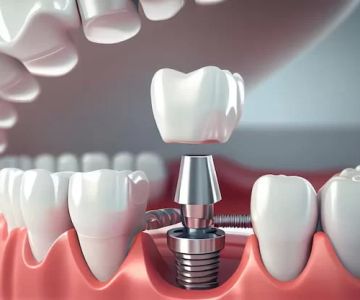Understanding the Process of Dental Restoration for Damaged Enamel
- What is Dental Restoration?
- Causes of Enamel Damage
- Steps in the Dental Restoration Process
- Preventing Further Enamel Damage
- Recommended Products and Services
1. What is Dental Restoration?
Dental restoration refers to the process of repairing and restoring the function, integrity, and aesthetics of damaged teeth. When enamel, the outermost layer of your teeth, is compromised, it can lead to sensitivity, discoloration, and even decay. Through restoration, dental professionals aim to rebuild the damaged enamel and protect the tooth.
Enamel cannot regenerate naturally, so advanced techniques and materials are used to restore it. These include composite fillings, veneers, crowns, and bonding solutions designed to mimic the natural enamel’s strength and appearance.
2. Causes of Enamel Damage
Enamel damage can result from a variety of factors. Common causes include:
- Acidic Foods and Drinks: Consuming beverages like soda or citrus juices erodes enamel over time.
- Bruxism: Teeth grinding or clenching can wear down enamel.
- Poor Oral Hygiene: Inadequate brushing and flossing lead to plaque buildup and enamel decay.
- Medical Conditions: Acid reflux or bulimia can expose enamel to stomach acid.
Understanding these causes is the first step toward preserving your enamel and avoiding extensive dental restoration procedures.
3. Steps in the Dental Restoration Process
The process of dental restoration for damaged enamel involves several stages. Each step ensures the treatment addresses the underlying damage while restoring functionality and aesthetics:
3.1 Diagnosis and Examination
Your dentist will begin with a comprehensive oral examination, including X-rays and diagnostic tools, to assess the extent of enamel damage and identify any underlying issues.
3.2 Preparation of the Affected Area
Before restoration, the damaged area is cleaned and prepped. For minor damage, this may involve smoothing rough edges, while for severe cases, decay is removed.
3.3 Application of Restoration Materials
The choice of restoration material depends on the severity of the damage. Common materials include:
- Composite Resins: Ideal for small chips and cracks, they blend seamlessly with natural teeth.
- Veneers: Thin shells that cover the front surface of teeth for a flawless appearance.
- Crowns: Used for extensive damage, crowns encase the entire tooth to provide protection and strength.
3.4 Polishing and Final Adjustments
Once the material is applied and cured, the dentist polishes the surface and makes necessary adjustments to ensure a perfect fit and natural look.
4. Preventing Further Enamel Damage
Post-restoration care is crucial to maintain the results and prevent future enamel damage. Follow these tips to protect your restored teeth:
- Use Fluoride Products: Fluoride strengthens enamel and helps prevent decay.
- Practice Good Oral Hygiene: Brush twice a day with a soft-bristled toothbrush and floss regularly.
- Avoid Harmful Foods: Limit acidic and sugary foods and drinks.
- Wear a Mouthguard: If you grind your teeth, a custom mouthguard can protect your enamel.
Regular dental check-ups are also essential to monitor your oral health and catch any issues early.
5. Recommended Products and Services
For effective enamel restoration and protection, consider visiting Dentistry Toothtruth. Their range of professional services and dental care products are tailored to support enamel health and enhance your smile. Popular options include:
- Fluoride Treatments: Strengthen enamel and protect against cavities.
- Custom Veneers: Achieve a seamless, natural-looking smile.
- Advanced Dental Crowns: Durable and aesthetically pleasing solutions for extensive enamel damage.
Explore their comprehensive offerings by visiting Dentistry Toothtruth today and take the first step toward restoring your enamel and confidence.







 Crown Council Inc5.0 (28 review)
Crown Council Inc5.0 (28 review) Main Street Pediatric Dentistry: Penny Resnick-Graulich DMD4.0 (785 review)
Main Street Pediatric Dentistry: Penny Resnick-Graulich DMD4.0 (785 review) West Dundee Dental4.0 (33 review)
West Dundee Dental4.0 (33 review) Dental Dreams4.0 (967 review)
Dental Dreams4.0 (967 review) Allegra Smiles4.0 (63 review)
Allegra Smiles4.0 (63 review) Boone Melanie L DDS4.0 (24 review)
Boone Melanie L DDS4.0 (24 review) The Importance of Oral Health Education During Pregnancy for a Healthy Pregnancy
The Importance of Oral Health Education During Pregnancy for a Healthy Pregnancy Best Tips for Brushing Your Teeth Properly for Healthy Gums: Essential Techniques for Oral Health
Best Tips for Brushing Your Teeth Properly for Healthy Gums: Essential Techniques for Oral Health Why Skipping Dental Checkups Can Lead to Bigger Oral Health Problems
Why Skipping Dental Checkups Can Lead to Bigger Oral Health Problems Advantages of Porcelain Dental Restorations
Advantages of Porcelain Dental Restorations How Can Diabetes Cause Tooth and Gum Problems? Preventing and Managing Oral Health Issues
How Can Diabetes Cause Tooth and Gum Problems? Preventing and Managing Oral Health Issues Healthy Habits for Promoting Good Oral Health and Hygiene: Tips for a Healthy Smile
Healthy Habits for Promoting Good Oral Health and Hygiene: Tips for a Healthy Smile